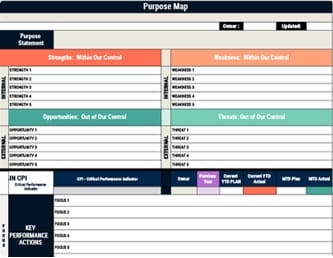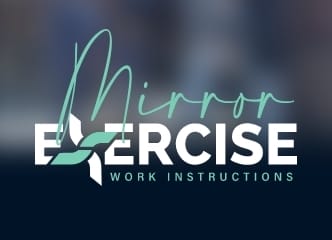You align teams by following a simple 3-phase method: first, assess your current state, goals, and gaps to pinpoint where performance misaligns; next, secure senior sponsorship and set shared, cross-functional goals with clear KPIs to coordinate execution; finally, install feedback loops—surveys, reviews, and dashboards—to measure, learn, and adapt continuously. This structure improves resource allocation, creates transparency, and reduces friction, but the real shift happens when you build the governance and accountability to sustain it.
Key Takeaways
- Assess the current state by mapping workflows, reviewing strategy documents, and identifying high-value performance gaps with leadership input.
- Define shared objectives, KPIs, and clear ownership; secure senior sponsorship to drive cross-functional collaboration.
- Establish cross-boundary communication channels and scheduled alignment reviews to keep teams synchronized.
- Optimize resource allocation based on priorities and create division-level scorecards to surface misalignment.
- Measure, learn, and adapt using feedback loops, dashboards, surveys, and goal completion rates to ensure continuous improvement.
Why Strategic Alignment Matters for Enterprise Change
Although enterprise change often starts with new goals or technologies, it only delivers results when teams align strategy with day-to-day execution, because alignment turns intention into measurable outcomes and reduces costly friction.
You need strategic alignment to connect organizational goals with the work people do, so you can focus effort, cut waste, and raise performance.
Use effective communication to clarify priorities, define metrics, and keep cross-functional teams coordinated, which reduces project failures that stem from unclear ownership and mismatched timelines.
Effective communication clarifies priorities, defines metrics, and coordinates teams to prevent failures from unclear ownership and mismatched timelines.
Strengthen collaboration to prevent the $1.5 million annual losses caused by misalignment, and manage resources deliberately so capacity matches demand.
When you prioritize resource management and employee engagement, you improve adaptability and release financial benefits, including higher profitability and shareholder returns, achieving strategic alignment at scale.
The 3-Phase Method at a Glance
Three concise phases give you a practical blueprint for enterprise-wide alignment: assess where you are, define where you’re going, and implement how you’ll get there.
This 3-Phase Method starts with an assessment phase, where you review business models, workflows, and performance metrics to surface gaps and prioritize fixes, ensuring you understand current constraints before acting.
Next, the goal definition phase converts insights into clear objectives and measurable strategic goals, linking them to critical success factors so every department knows what to deliver and why.
You’ll translate priorities into targets, timelines, and accountability.
Finally, the implementation phase activates alignment processes that synchronize work, incentives, and feedback loops, enabling cohesive functioning.
You’ll optimize resource allocation, reinforce collaboration, and maintain continuous checks, driving sustainable performance improvements as conditions evolve.
Phase 1: Assess Current State, Goals, and Gaps
Start by grounding the 3-Phase Method in facts: before you set targets or mobilize teams, you need a clear picture of how work actually runs today and how well it supports stated goals.
First, assess current state by mapping business models, policies, and workflows, then identify performance gaps that slow strategic execution.
Map business models, policies, and workflows to surface performance gaps that slow strategic execution.
Use leadership engagement to clarify short- and long-term organizational goals, translating them into concrete alignment efforts.
Review strategic documents to test strategic alignment, noting where departmental objectives diverge from enterprise aims.
Pull division-level scorecards to pinpoint process, role, or handoff issues that miss the strategy.
Synthesize findings into a prioritized gap list, rank items by impact and urgency, and align resource allocation accordingly, ensuring limited capacity targets the highest-value corrections.
Phase 2: Orchestrate Cross-Functional Collaboration and Sponsorship
Even before you launch projects, orchestrate cross-functional collaboration by securing visible senior sponsorship, setting shared objectives with clear KPIs, and establishing communication channels that cut across org charts.
You’ll create strategic alignment by asking senior leaders to provide resources, remove roadblocks, and model open communication that bridges team boundaries.
Translate organizational objectives into team-level commitments with clear key performance indicators, then assign owners to reinforce accountability.
Tailor messages to industry-specific challenges so diverse functions understand how their work supports shared goals, and schedule alignment reviews to keep efforts synchronized without drift.
- Define shared goals, success criteria, and accountability by role.
- Stand up cross-functional forums that enable open communication.
- Map KPIs to organizational objectives, with transparent dashboards.
- Hold recurring alignment reviews to confirm scope, priorities, and resourcing.
Phase 3: Measure, Learn, and Adapt With Feedback Loops
With cross-functional forums and sponsorship in place, you now need mechanisms that verify alignment is working and guide adjustments as conditions change.
Establish feedback loops that you can measure at regular intervals, using clear key performance indicators tied to alignment effectiveness, such as goal completion rates and employee engagement scores. Run periodic surveys, lightweight check-ins, and retrospectives to surface disconnects early, then adjust strategies before drift spreads across teams.
Measure alignment with clear KPIs, periodic surveys, and retrospectives to catch drift early and adjust.
Use simple dashboards and pulse tools to track progress, capture comments, and flag risks, improving transparency and accountability without slowing execution.
Compare trend data to organizational goals, noting where outcomes lag or surpass expectations, and document hypotheses about why.
Close the loop by sharing findings, committing to next actions, and revisiting them, reinforcing continuous improvement and sustained alignment.
Governance, KPIs, and Accountability Mechanisms
How do you turn alignment from a hopeful intention into a managed system?
You establish governance that defines who decides what, how decisions flow across departments, and how you escalate issues.
Then you tie KPIs directly to strategic objectives and organizational goals, so every team can see how their work moves the enterprise.
Finally, you add accountability mechanisms—regular performance reviews, progress check-ins, and corrective actions—supported by transparent reporting to drive collaboration and timely course corrections, which also boosts profitability.
- Define governance roles, decision rights, and forums that connect strategy to execution.
- Cascade KPIs from strategic objectives, with clear owners, targets, and timeframes.
- Run performance reviews and rhythmical check-ins to reinforce accountability mechanisms.
- Operate transparent reporting that surfaces progress, risks, and learnings for cross-functional alignment strategies.
Tools, Frameworks, and Real-World Examples
Strong governance, KPIs, and accountability set the rules of the game; now you need practical tools and frameworks that make alignment visible, repeatable, and shared across teams.
Use OKRs to translate strategic alignment into measurable outcomes, linking goals across levels and boosting employee engagement through transparent communication and collaboration.
Apply the McKinsey 7-S framework to diagnose gaps across strategy, structure, systems, shared values, style, staff, and skills, then prioritize fixes that support common objectives.
Adopt hybrid alignment: set clear top-down intent while enabling bottom-up initiatives, as Starbucks demonstrates.
Enhance coordination with portfolio management tools that surface dependencies, track progress, and reduce silos.
Study real-world examples like Google’s bottom-up practices, which foster innovation, adaptability, and alignment, driving measurable profitability gains.
Frequently Asked Questions
What Is the Team Alignment Process?
The team alignment process means you set clear, organization-wide objectives, then connect each team’s work to those goals.
You run regular cross-department meetings to share updates, surface dependencies, and adjust priorities.
You hold recurring alignment workshops to review metrics, fix gaps, and refine collaboration.
You implement an integrated marketing tech stack to create a single source of truth, reduce silos, and streamline communication.
Done well, you’ll boost productivity and accelerate innovation.
What Are Three Methods for Achieving Strategic Alignment?
Use three methods: Top-Down Alignment, Bottom-Up Alignment, and a Hybrid Approach.
In a top-down model, you define vision, cascade priorities, assign owners, and enforce accountability, which suits regulated settings.
In a bottom-up model, you solicit ideas, pilot experiments, and scale successes to drive innovation.
In a hybrid model, you set nonnegotiable global standards, empower local adaptations, and synchronize planning.
Track success with goal completion rates and employee engagement scores.
How Do You Align Your Team’s Activities With the Overall Business Goals?
You align your team by translating company goals into clear, measurable objectives, then mapping each person’s work to those targets with defined KPIs and ownership.
Set quarterly plans, run weekly check-ins, and use dashboards to monitor progress, address drift, and reallocate resources.
Communicate strategy in plain language, tailoring messages for each function, and host cross-department reviews and workshops to remove blockers, synchronize dependencies, share learnings, and reinforce transparency and accountability.
How Do You Align the Team Accordingly?
Align the team by translating company goals into clear, measurable team OKRs, then cascade tasks and owners.
Schedule regular cross-functional check-ins to surface dependencies, resolve issues, and recalibrate priorities against KPIs like completion rates and engagement scores.
Use a shared tech stack for a single source of truth, standardizing dashboards and updates.
Hold monthly reviews to assess progress, adjust scope or resourcing, and capture lessons, ensuring transparency, accountability, and continuous alignment.
Conclusion
By applying the 3-Phase Method, you turn alignment from a slogan into a system: assess where you stand and why gaps persist, secure cross-functional sponsorship with shared KPIs, then measure, learn, and adapt through tight feedback loops. Like gears meshing in a clock, each phase powers the next, ensuring transparency, accountability, and smarter resource allocation. Set governance cadences, refine metrics, and close gaps continuously, and you’ll keep teams coordinated, strategy coherent, and execution predictably on track.



